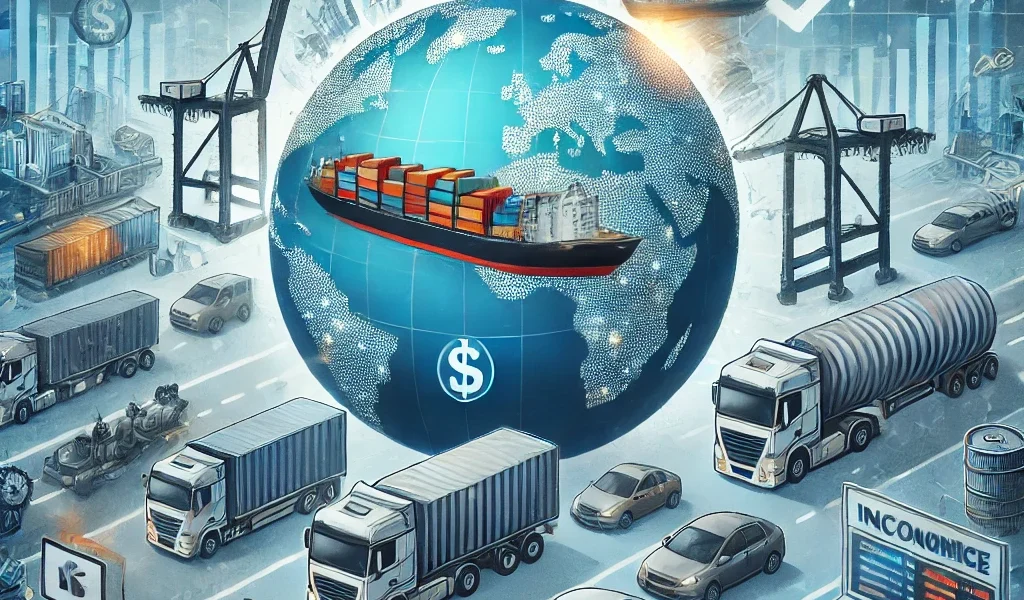Introduction
Supply chain disruptions have become one of the most significant challenges facing the global economy. From the COVID-19 pandemic to geopolitical conflicts and climate-related events, multiple factors have contributed to severe bottlenecks in the supply of goods and services. These disruptions have led to rising costs, inflation, and delays that affect businesses and consumers worldwide. In this blog, we will explore how supply chain disruptions impact the global economy, the key causes, and potential solutions for businesses and policymakers.
Understanding Supply Chain Disruptions
A supply chain is a network of suppliers, manufacturers, distributors, and retailers that work together to produce and deliver goods. Disruptions occur when one or more parts of this chain break down, causing delays, shortages, and increased costs. These disruptions can be caused by a variety of factors, including:
- Pandemics and health crises (e.g., COVID-19 lockdowns)
- Geopolitical tensions and trade restrictions
- Natural disasters and climate change
- Labor shortages and strikes
- Cybersecurity threats and technological failures
Key Causes of Supply Chain Disruptions
1. COVID-19 Pandemic and Its Aftermath
The COVID-19 pandemic severely disrupted global supply chains by shutting down factories, restricting transportation, and causing labor shortages. Even as economies reopen, the aftereffects continue to impact logistics, with companies struggling to meet increased demand.
2. Geopolitical Conflicts and Trade Wars
Trade restrictions, tariffs, and conflicts between major economies (such as the U.S.-China trade war or the Russia-Ukraine war) have disrupted global supply chains. Sanctions and export bans limit access to critical resources, increasing costs and uncertainty for businesses.
3. Shipping and Logistics Bottlenecks
Ports worldwide have experienced congestion due to container shortages, labor strikes, and inefficiencies in transportation networks. The closure of key shipping routes or blockages, such as the Suez Canal crisis, can cause delays and financial losses worth billions.
4. Shortages of Raw Materials and Semiconductors
Many industries rely on a steady supply of raw materials, but shortages of essential components like semiconductors have caused production delays in the automotive, electronics, and consumer goods sectors.
5. Inflation and Rising Costs
Disruptions in supply chains lead to increased production and shipping costs. These costs are often passed down to consumers, contributing to inflation and reducing purchasing power.
6. Climate Change and Natural Disasters
Extreme weather events, such as hurricanes, floods, and wildfires, disrupt supply chains by damaging infrastructure, shutting down factories, and delaying transportation networks.
Economic Impact of Supply Chain Disruptions
1. Increased Prices and Inflation
With supply shortages and rising transportation costs, businesses have no choice but to increase prices for goods and services. This leads to inflation, reducing consumers’ purchasing power and slowing economic growth.
2. Business Revenue and Profitability Decline
Companies that depend on just-in-time manufacturing face production delays and increased costs, affecting their profitability. Small businesses, in particular, struggle to absorb the rising expenses, forcing some to shut down.
3. Job Losses and Wage Pressures
Supply chain disruptions affect employment by reducing production levels, leading to job cuts in manufacturing, retail, and logistics. At the same time, labor shortages in key sectors push wages higher, increasing operational costs for businesses.
4. Stock Market Volatility
Disruptions in supply chains impact corporate earnings, leading to stock market instability. Investors become cautious, affecting market confidence and slowing economic recovery.
5. Global Trade Slowdown
International trade relies on efficient supply chains. Disruptions create bottlenecks that reduce global trade volumes, limiting economic growth and affecting both developed and developing economies.
Solutions and Strategies to Overcome Supply Chain Disruptions
1. Diversifying Suppliers and Manufacturing Locations
Businesses should reduce dependence on a single supplier or region by diversifying their supply chain. Nearshoring (moving production closer to home) and friendshoring (working with allied nations) can help mitigate risks.
2. Investing in Technology and Automation
Technologies like artificial intelligence, blockchain, and IoT (Internet of Things) improve supply chain visibility, efficiency, and security. Automation in warehouses and factories also reduces reliance on human labor.
3. Strengthening Infrastructure and Logistics
Governments and businesses must invest in modernizing transportation networks, expanding port capacities, and improving storage facilities to minimize supply chain bottlenecks.
4. Building Strategic Reserves
Stockpiling essential raw materials and components can help businesses withstand temporary disruptions and avoid production halts.
5. Collaborating with Policymakers and Industry Partners
Public-private partnerships can create policies that enhance supply chain resilience. Trade agreements and regulatory adjustments can help streamline global logistics.
Conclusion
Supply chain disruptions have a profound impact on the global economy, affecting inflation, business profitability, employment, and trade. While these disruptions pose significant challenges, businesses and governments can implement strategic solutions to enhance supply chain resilience. By diversifying suppliers, investing in technology, and strengthening infrastructure, the world can adapt to future crises and maintain economic stability. Staying proactive and agile is key to overcoming supply chain uncertainties in an increasingly interconnected global economy.




